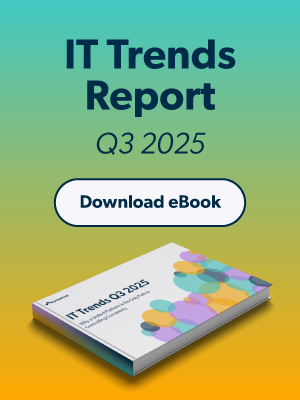Updated on February 14, 2025
Data security is an essential part of modern IT, and organizations must protect sensitive information at all times. One key idea is “data at rest,” which means inactive data stored on devices or systems.
This blog explains data at rest’s technical definition, importance, challenges, and best practices for securing it.
Understanding Data at Rest
What Does “Data at Rest” Mean?
Data at rest refers to information that is stored on a physical or digital storage medium in a non-transitory state. Unlike data in transit, which is actively being transmitted across a network, or data in use, which is actively being processed, data at rest is considered dormant.
Examples include:
- Files and documents saved on hard drives or cloud storage services.
- Databases containing sensitive information like customer data or financial records.
- Archived backups stored on physical drives or remote servers.
While the data may not be moving or in active use, it remains a critical asset and often contains sensitive or confidential information.
Importance of Securing Data at Rest
Securing data at rest is essential for:
- Compliance: Regulations like GDPR, HIPAA, and PCI DSS mandate stringent data protection measures for stored information.
- Preventing Unauthorized Access: Dormant data can still be targeted by attackers looking to exploit weak security measures.
- Protecting Organizational Reputation: Breaches involving data at rest can result in severe financial and reputational damage.
Whether it’s sensitive intellectual property or customer records, protecting data at rest is indispensable to an organization’s cybersecurity strategy.
Data at Rest vs. Data in Transit vs. Data in Use
To fully understand data at rest, it’s helpful to differentiate it from other states of data.
| Data State | Description | Examples |
| Data at Rest | Stored information in a non-transitory state. | Files on a hard drive or database. |
| Data in Transit | Data actively moving over a network. | Emails being sent, data transfers. |
| Data in Use | Data being actively processed or accessed by an application or user. | Editing a document or executing code. |
Each state of data requires tailored security approaches to mitigate risks effectively.
How Data at Rest Works
The Concept of Storage
Data at rest exists in both physical and logical storage locations:
- Physical Storage: Data stored on physical media like hard drives, SSDs, tapes, and USB drives.
- Logical Storage: Virtual representations of where data resides, such as databases, cloud storage, or partitions.
While physically stored data remains static, logical partitions depend on underlying software systems to organize and manage access to stored information.
Mechanisms for Securing Data at Rest
Protecting data at rest involves implementing several key mechanisms:
- Encryption: Encryption encodes data using algorithms like AES (Advanced Encryption Standard) and RSA, ensuring it cannot be accessed without the correct decryption key.
- Example: A financial database encrypted with AES-256 remains inaccessible to unauthorized users even if stolen.
- Access Controls: Role-based access control (RBAC) mechanisms determine which users or systems can access stored data. File permissions, user authentication, and multi-factor authentication are often used as layers of protection.
- Data Classification and Segregation: By categorizing data based on sensitivity, organizations can prioritize security measures for the most critical assets.
- Example: Isolating customer payment information in a secure environment separate from operational data.
Security Challenges and Risks to Data at Rest
Data at rest faces unique challenges, including:
Unauthorized Access
Attackers often focus on poorly secured or overlooked storage, like old hard drives or misconfigured cloud storage buckets. Weak permissions and missing encryption make these systems easy targets.
Physical Theft of Devices
Physical storage devices like laptops, USB drives, and external hard drives can be lost or stolen, exposing the stored data to malicious actors if not secured.
Insider Threats and Negligence
Insider threats arise from employees or contractors misusing their authorized access—whether intentionally or due to negligence.
Compliance Risks
Failing to secure regulated data at rest could result in penalties under laws like HIPAA or PCI DSS. Examples include storing unencrypted sensitive customer data on a server that is later compromised.
Best Practices and Solutions for Securing Data at Rest
To ensure data at rest remains secure, organizations should follow these best practices:
Implement Robust Encryption
Encrypt sensitive data with strong algorithms like AES-256. Consider using self-encrypting drives (SEDs) for physical media to ensure ongoing protection.
Use Access Controls Effectively
Apply the Principle of Least Privilege (PoLP) to grant users only the access they need.
Employ advanced access control measures like RBAC and multi-factor authentication (MFA).
Monitor and Audit Data Access Logs
Regularly review audit logs to detect unauthorized access attempts and suspicious patterns, ensuring immediate response to potential breaches.
Employ Secure Storage Devices
Utilize hardware security modules (HSMs) for managing cryptographic keys and storing sensitive data. They offer an additional layer of physical security.
Classify and Isolate Data
Segment data based on sensitivity and store critical information in secure environments, reducing attack surface and ensuring compliance.
Glossary of Terms
- Data at Rest: Data stored in a persistent, inactive state on physical or digital mediums.
- Encryption: The process of encoding data to make it unreadable without a decryption key.
- Access Control: Security mechanisms used to restrict unauthorized users from viewing or modifying data.
- Hardware Security Module (HSM): A physical device used for managing and securing cryptographic keys.
- Data Classification: Organizing data into categories based on sensitivity and security requirements.
- Insider Threat: Risks posed by authorized users, such as employees, misusing their access.
- Compliance: Following regulatory standards like GDPR, HIPAA, or PCI DSS is essential for protecting data. By applying these practices strategically, IT professionals can effectively secure data at rest, reduce compliance risks, and strengthen their organization’s resilience.






